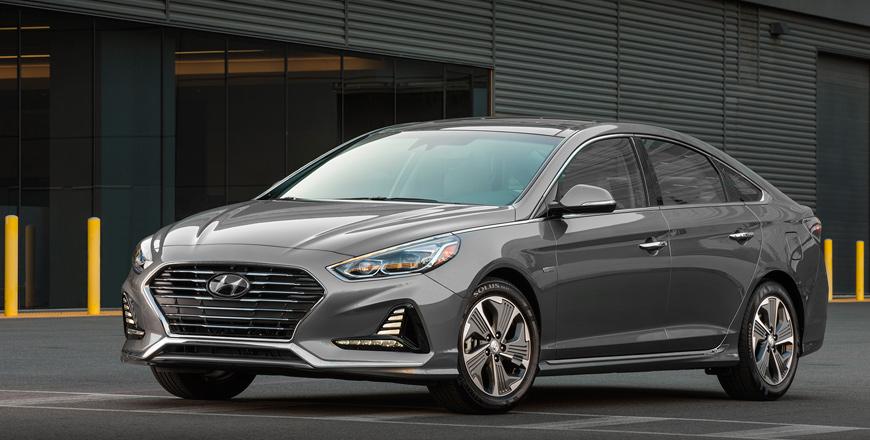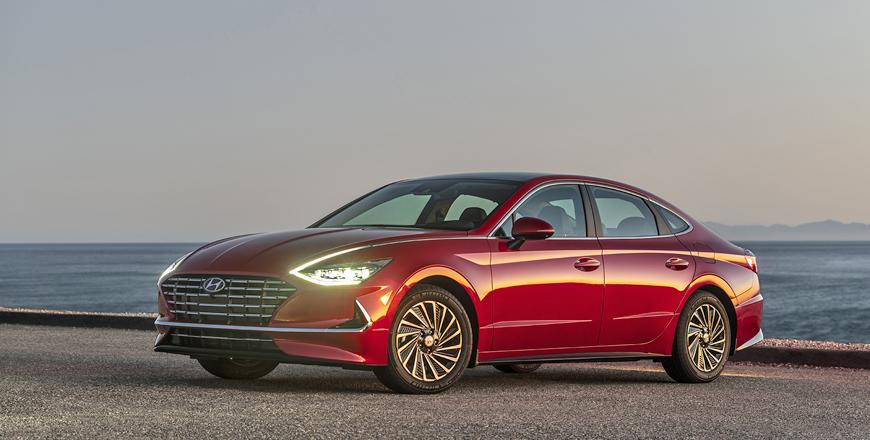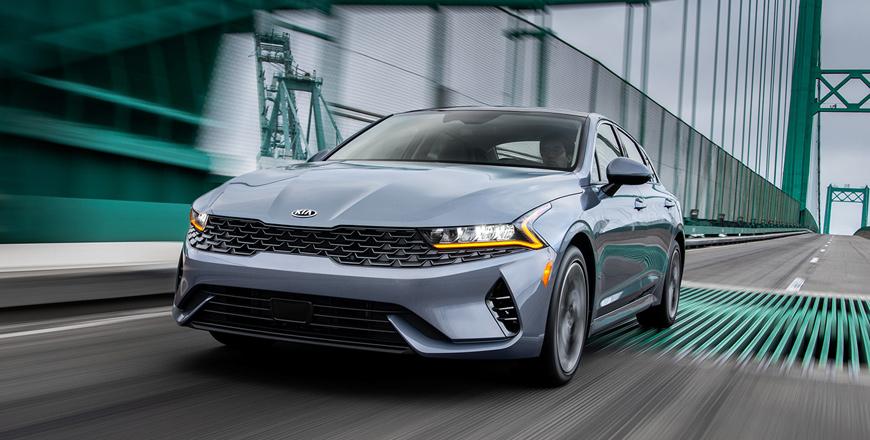You are here
Hyundai Sonata Hybrid: High comfort, low consumption
Jul 02,2019 - Last updated at Jul 02,2019

Photo courtesy of Hyundai
By Ghaith Madadha
Among Jordan’s most popular mid-size saloons, the Hyundai Sonata Hybrid is a comfortable, smooth and refined cruiser that combines eye-catching design with the fuel efficiency and confidently plentiful torque output often associated with part-electric hybrid cars.
Launched shortly after the seventh generation Sonata first arrived in 2014, the current Sonata Hybrid may be evolutionary in design, engineering and concept, but makes subtle yet significant improvements over its predecessor.
Better integrated within the Sonata range, the current Sonata Hybrid eschews its predecessor’s use of a noticeably different fascia to non-hybrid models.
Distinguished from garden-variety Sonatas by blue badges, clear rear light casings, hidden exhaust tip and more aerodynamically efficient alloy wheels, the current Sonata Hybrid is more discrete and less obvious to signal its petrol/electric driveline.
Featuring a similarly low and arcing roofline, high flanks and sharply creased, yet more sophisticatedly refined body work, the seventh generation adopted a more elegantly restrained and somewhat conservative front design than the deliberately attention grabbing sixth generation. But by a 2017 facelift it was restyled with sharper rear lights and a bigger, snoutier grille.
Generous yet frugal
Better incorporated with Hyundai’s new family design themes and a more fluent lead-in to the soon-arriving eighth generation Sonata, the face-lifted Sonata Hybrid is powered by a downsized but more sophisticated 2-litre 4-cylinder petrol engine behind its tapered “cascading grille” centre piece.
Replacing its predecessor’s 2.4-litre multipoint injection engine, the current Hybrid’s petrol engine incorporates direct fuel injection and like several economy-minded models — notably including the 1980s BMW 525e — runs on a thermally-efficient Atkinson cycle, and is mated to an electric motor sandwiched between its transversely-mounted combustion engine and gearbox.
Producing 154BHP at 6,000rpm and
140lb/ft torque at 5,000rpm from its combustion engine and supplemented by 38BHP at 1,770-2,000rpm and 151lb/ft at 0-1,770rpm from its electric motor for a total 192BHP and unspecified but ever-generous combined torque over a broad band.
Better integrating its petrol-electric systems than before, the Sonata Hybrid briskly hauls its 1.6-tonne mass through 0-100km/h in 9.3-seconds with a chirp of its driven front wheels and onto 192km/h. Responsive from standstill after a moment’s pause, it is flexible accumulating speed, overtaking and on steep, if brief, inclines.
Improved integration
More fluently integrating drive units, the Sonata Hybrid also features improved off-throttle response and winds down quicker than before from full throttle. Versatile on short sharp inclines, the Sonata’s comfort zone however isn’t sustained steep hill climbs where hybrid drive batteries can deplete. That said, kinetic energy recovery brakes well use every opportunity to quickly recharge batteries.
In its element in city driving and on highways where it makes use of abundant and broad torque availability, the Sonata Hybrid features improved brief 120km/h electric-only cruising and returns frugal 5.6l/100km/h combined fuel efficiency.
Built using more high strength steel and better body bracing to develop 41 per cent increased torsional rigidity for improved ride refinement and handling precision, the Sonata Hybrid however also develops less aerodynamic drag (CD0.24) than non-Hybrid sister models for improved efficiency and reduced noise. A natural cruiser that eats up long distances in comfort, the Sonata Hybrid is stable, settled and thoroughly well-damped on highway, where it feels like a bigger and grander car. Brakes are meanwhile reassuringly grippy, but with kinetic recover functionality, aren’t especially nuanced in pedal feel.
Refined ride
Taking imperfections in its stride and virtually gliding over more progressive bumps, the smooth riding Sonata Hybrid features improved handling characteristics, better body lean control and quicker more direct steering, but over sudden crests, dips and on rebound through rougher and winding roads, perhaps slightly firmer damping would lend better vertical control.
Through such switchbacks one can briskly hustle the Sonata Hybrid with light finger tip steering inputs, where more measured progressive throttle inputs make for tidier turn-in and aggressive input tend to provoke some understeer, that is easily scrubbed away by easing off.
A forgiving, quiet and refined ride, the Sonata Hybrid’s wide cabin is meanwhile suited for cruising duties, with big comfortable and well-adjustable driving position.
Sitting low and hunkered down, the Sonata is spacious in front, while for tall passengers, generous rear legroom makes up for slight headroom lost to its rakish roofline.
Similarly, parking sensors, reversing camera and blindspot warnings prove useful considering the Sonata’s low glasshouse. Reduced bootspace meanwhile remains generous at 380-litres in Hybrid guise.
Well-built, stylised and user-friendly inside, the Sonata Hybrid is also well outfitted with convenience, infotainment and safety equipment.
TECHNICAL SPECIFICATIONS
Engine: 2-litre, Atkinson cycle, aluminium block/head, transverse 4-cylinders
Bore x stroke: 81 x 97mm
Compression ratio: 13.5:1
Valve-train: 16-valve, DOHC, direct fuel injection
Hybrid type: Parallel petrol combustion engine & electric motor
Battery: Lithium polymer
Battery voltage/capacity: 270v/1.76kWh
Battery output: 56kW
Gearbox: 6-speed automatic, front-wheel-drive
Gear ratios: 1st 4.639:1; 2nd 2.826:1; 3rd 1.841:1; 4th 1.386:1; 5th 1:1; 6th 0.772:1
Reverse/final drive ratios: 3.385:1/3.32:1
Petrol engine power, BHP (PS) [kW]: 154 (156) [115] @6,000 rpm
Electric motor power, BHP (PS) [kW]: 38 (51) [52] @1,770-2,000rpm
Combined power, BHP (PS) [kW]: 192 (195) [145] @6,000rpm
Petrol engine torque, lb/ft (Nm): 140 (190) @5,000rpm
Electric motor torque, lb/ft (Nm): 151 (205) @0-1,770rpm
0-100km/h: approximately 9.3-seconds
Top speed: 192km/h
Electric-only limit: 120km/h
Fuel consumption, city/highway/combined: 5.9-/5.3-/
5.6-litres/100km
Length: 4,855mm
Width: 1,865mm (excluding door mirrors)
Height: 1,470mm
Tread, F/R: 1,602/1,609mm
Fuel capacity: 60-litres
Steering: Electrically assisted rack & pinion
Steering ratio: 14.3:1
Suspension: MacPherson struts/multi-link, coil-springs, stabiliser bars, 24.2mm/17mm
Brakes, F/R: Ventilated discs, 304mm/284mm
Tyres: 215/55R17
Related Articles
An assertively stylised and dramatic design departure from its conservative predecessor, the eight Hyundai Sonata instead harks back to the
The fifth incarnation and latest successor to the car formerly known as the Optima, Kia’s popular mid-size saloon now adopts the model line’
A high-tech replacement for the Infiniti G Sedan, the new Q50 compact premium saloon is the luxury brand’s first new offering since recently relocating to Hong Kong and reasserting itself as a global and urbane sports luxury brand.


















